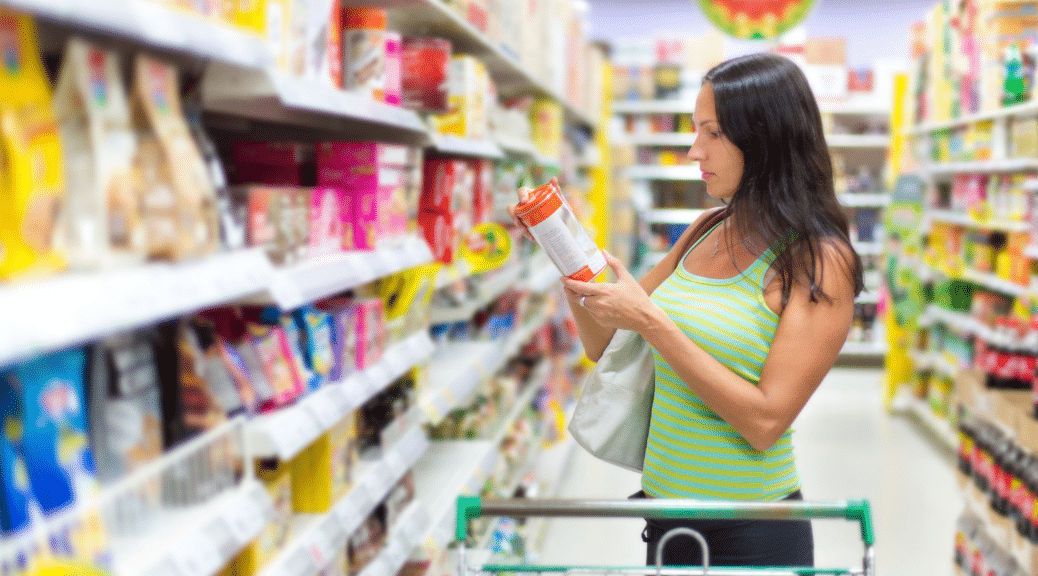
Examining Plastic Recycling Safety: Insights from a Critical Study
Examining Plastic Recycling Safety: Insights from a Critical Study
A ground-breaking study titled “Is Plastic Recycling Safe?” released by Toxics Link unveils concerning revelations about the safety of plastic recycling practices in India. Conducted by researchers from the Delhi-based environmental group, the study exposes a hazardous blend of chemicals present in products made from recycled plastic, particularly in food contact materials (FCM) and toys. These findings highlight the potential risks associated with using recycled plastic in consumer goods, underscoring broader concerns about the efficacy and safety of current recycling processes. This study sheds light on an urgent environmental issue, prompting crucial discussions and calls for action in the realm of plastic waste management.
The study, conducted from October to January 2023, tested different products made from recycled plastic, including non-branded food and drink containers and children’s toys from local markets. Lead researcher Priti Banthia Mahesh, Chief Programme Coordinator, Toxics Link, said, “With mounting concerns surrounding plastic pollution and the industry pushing for recycling as the perfect solution, it is imperative that we critically assess the safety of plastic recycling practices. Our report clearly shows that recycled plastic is not clean and maybe full of chemicals. The study offers valuable insights that can inform decision-making and drive positive change in this crucial area.”
Key Findings: Detection of Harmful Chemicals Raises Concerns
A concerning 67% of examined products were found to harbour at least one of the five chemicals scrutinized, namely phthalates, chlorinated paraffins, heavy metals, bisphenol A, and nonylphenol. These substances present diverse health hazards, including adverse effects on reproductive health and pregnancy, respiratory complications, skin ailments, and DNA impairment.
Furthermore, 86% of the toys analysed tested positive for chemical presence, with a significant portion containing two or more chemicals. Notably, rubber ducks exhibited the presence of single-chain chlorinated paraffins (338 mg/kg), cadmium (89 mg/kg), nonylphenol (522 mg/kg), as well as elevated levels of DEHP and DINP phthalates. Similarly, a mouth organ was found to contain bisphenol A (12.7 mg/kg), nonylphenol (41.1 mg/kg), and DEHP phthalate (220000 mg/kg). Additionally, a locally available Rubik’s cube was identified to contain bisphenol A, chlorinated paraffins, as well as lead and chromium.
Moreover, 67% of the food contact materials analysed were found to contain one or more chemicals. Bisphenol A was detected in masala boxes (161 mg/kg), water bottles (0.34 mg/kg), and various other food containers. Additionally, a food container primarily used for casseroles was found to contain single-chain chlorinated paraffins (111 mg/kg).
These products are commonly used in low-income communities across India, amplifying the risk of direct chemical transmission to vulnerable populations, especially children.
The study highlights the broader issue of chemical contamination in plastic manufacturing and recycling processes. A recent technical report from the United Nations Environment Programme (UNEP) found 13,000 chemicals present in plastic; 7,000 have hazard data of which 3,200 are chemicals of concern.
The report also sheds light on the absence of comprehensive standards and regulations governing the production of recycled plastic products. This lack of oversight allows for the proliferation of potentially hazardous materials in consumer goods, exacerbating health and environmental risks. Some of the chemicals found in the tested products have bans and restrictions in different countries.
Satish Sinha, Associate Director of Toxics Link, emphasizes the urgent need for action. “Given the mounting scientific evidence highlighting the presence of highly hazardous and toxic chemicals in recycled products, the practice of recycling plastic poses a serious threat to human health. Promoting indiscriminate plastic recycling as a waste minimization strategy is untenable,” he stated. “Instead, the focus should be on eliminating toxic chemicals from plastics.”
The publication of the report titled “Is Plastic Recycling Safe?” echoes the findings of international organizations such as the International Pollutants Elimination Network (IPEN) and UNEP, emphasizing that chemical recycling of plastics is not a sustainable solution to the escalating plastic waste crisis. The report’s release underscores the pressing need for comprehensive reforms in plastic recycling processes, both domestically in India and globally.
Plastics have become pervasive to the extent that their widespread use, distribution, and unintended consequences signal the dawn of a new era: “The Plasticene.” This epoch reflects a time when human reliance and affinity for plastic have reached unprecedented levels. However, the Plasticene age has raised concerns as plastics infiltrate Earth’s various cycles—geological, aquatic, and atmospheric—due to their extensive production, usage, disposal, and persistent presence across the environment. The accumulation of plastic in ecosystems has engendered a global challenge of plastic pollution, posing significant cross-border threats to natural environments, human well-being, and sustainability.
Types of Plastic Recycling
Presently, plastic recycling methods are broadly divided into mechanical and chemical processes.
- Mechanical recycling, also known as closed-loop recycling, entails processing plastic into secondary raw material with minimal chemical modification. This widely utilized method aims to transform plastic into products that perform similarly to virgin plastic. Both primary and secondary recycling fall under the umbrella of mechanical recycling. Primary recycling involves converting recycled plastic into a similar product through physical processes, minimizing chemical intervention. For instance, Polyethylene Terephthalate (PET) plastics retrieved from post-consumer bottles undergo primary recycling to produce new bottles. On the other hand, secondary recycling modifies recycled materials to create entirely new products while retaining the same material composition. For example, recycled PET bottles can be converted into yarns, representing a form of secondary recycling that involves chemical alterations.
- Chemical recycling, also termed tertiary recycling, encompasses the modification of the chemical structure of polymeric waste to generate substances that serve as raw materials for manufacturing new products. This method, also known as feedstock recycling, presents an alternative approach to conventional mechanical recycling.
Is Recycling an Integral Element of the Circular Economy?
As global attention intensifies on the plastic crisis, there is a growing emphasis on fostering a circular economy (CE) across various sectors. CE aims to shift away from the unsustainable linear model of material use and disposal towards a more sustainable, cyclic system where materials are produced, utilized, reused, and recycled, thus reducing resource extraction, energy consumption, and pollution.
In recent years, the concept of Circular Economy (CE) applied to plastic has increasingly revolved around plastic recycling, touted by the industry as a remedy for plastic pollution. While the ideal scenario entails recycled materials being repurposed into new products, thereby reducing the reliance on virgin plastic, the reality often leads to downcycling. Unlike true recycling, downcycling results in materials of inferior quality, diminishing the value of the product with each recycling cycle. Research indicates that only a small fraction of plastic waste undergoes efficient recycling, with a significant portion either being downcycled or lost during the process, underscoring the hurdles in achieving genuine circularity within the plastic recycling framework.
Impact of Chemicals Found in Recycled Plastic on Human Health
The following is a summary of some of the most significant epidemiological studies conducted in order to understand the impact of these chemicals on human health.
i. Reproductive health: Exposure to chemicals found in plastics has been associated with adverse reproductive effects, as indicated by numerous studies. Phthalates, including DEHP, DEP, DMP, and DnBP, have been linked to early onset of menstruation and accelerated breast development in young girls, along with an increased risk of breast cancer and endometriosis. Additionally, phthalates exhibit anti-androgenic properties, disrupting the activity of male hormones such as testosterone.
BPA and NP have been observed to decrease the anogenital distance in males, contributing to a decline in male fertility. Specifically, BPA is known to interfere with the function of both male and female sex hormones. Lead (Pb) has the potential to disrupt sex hormones and destabilize chromatin, potentially resulting in congenital disabilities.
Cadmium (Cd) can diminish sperm motility in males, disrupt ovarian morphology, and decrease egg count, ultimately affecting female fertility. Moreover, chlorinated paraffins (CPs) have been shown to impair the reproductive system, causing premature breast development in females and leading to reduced semen quality in men.
ii. Pregnancy and foetal development: BPA has also been known to impact child brain development, prompting regulatory controls on its usage in baby bottles and other containers for food and drinks intended for children. Pb can pass through the placenta and cause miscarriages, or low birth weight of foetuses Cd may disturb the growth and development of follicles, leading to spontaneous abortion and birth defects in infants. CPs can cause preterm birth in humans. Parental exposure to DEHP, DBP and DiBP is also associated with child verbal comprehension, processing speed, perceptual reasoning, working memory, neuropsychological disorders and mental retardation.
iii. Respiratory illness: Phthalates are known to trigger respiratory illness such as asthma, causing impairment and deterioration of the lungs.
iv. Dermal and skin issues: Heavy metals present in plastics can pose a toxicity risk that manifests in skin-related problems. Accumulation of heavy metals within the body can result in skin pigmentation abnormalities and increase the risk of developing skin cancer. Exposure to chlorinated paraffins (CPs) can also lead to skin irritation and various related dermatological issues.
v. Endocrine Disruption: In young children, exposure to phthalates has been associated with effects on metabolic activity, as well as disruptions in the endocrine and reproductive systems. Similarly, BPA and NP are recognized as endocrine-disrupting chemicals. These substances have the ability to mimic estrogen and bind to endocrine receptors, thereby causing disruption to the endocrine system.
vi. Carcinogenicity: Phthalates, CPs, BP and NP and heavy metals (Pb, Cd, As and Cr) found in plastic are mutagenic and carcinogenic.
vii. Cardiovascular system: Phthalates are recognized for their association with cardiovascular risks, including fluctuations in blood pressure, coronary heart diseases, and atherosclerosis. A particular study conducted within the Uppsala community, focusing on individuals aged 70 years or older, unveiled a significant correlation between phthalates and BPA in the development of coronary heart disease.
viii. Erythrocytes (Red blood cells): Phthalates, such as DEHP, impact the plasma membrane of erythrocytes, resulting in increased osmotic fragility by enhancing their flexibility. This ultimately distorts the shape of the erythrocytes, thereby impairing the integrity of the entire cell.
ix. Apoptosis (programmed cell death) and DNA damage: NP may induce apoptosis and chromosomal damage, eventually affecting the DNA. BPA also causes DNA damage in human blood cells.
Apart from these health effects, these chemicals can also cause liver impairment and immunotoxicity, neurological and renal damage, tissue lesions and skeletal retardation.
Sustainable Development Goals Aligned with Recycling Initiatives
- Good Health and Well-being: This objective highlights the significance of producing and utilizing recycled plastic materials that are free from toxins, aligning closely with the overarching goal of ensuring good health and well-being for all.
- Clean Water and Sanitation for All and Life Below Water: Plastics play a significant role in polluting water systems and harming marine life. Their degradation results in the generation of microplastics and the release of harmful chemicals, which have detrimental effects on marine ecosystems. Protecting these habitats and ecosystems requires stringent controls on the chemical composition of all plastics, encompassing both virgin and recycled materials.
- Ensure Sustainable Production and Consumption: Promoting sustainable production involves the adoption of toxin-free recycled plastic materials, thereby integrating recycled products into the circular economy framework and encouraging sustainable consumption practices.
- Industry, Innovation, and Infrastructure: This objective aligns with the advancement of industries and innovations aimed at mitigating harmful chemicals present in plastics. It entails the development of resilient infrastructure and the promotion of sustainable industrialization through the implementation of technologies and practices that mitigate the adverse environmental and health impacts associated with plastic use.
- Sustainable Cities and Communities: This goal advocates for industries and innovations focused on reducing harmful chemicals in plastics, contributing to the establishment of sustainable cities and communities. It promotes the development of eco-friendly practices and alternatives that can be implemented at the community level, aligning with the broader objective of achieving sustainable urban development.
The interconnectedness of different Sustainable Development Goals (SDGs) underscores the importance of adopting a comprehensive approach to address the environmental and health issues linked to the use of recycled plastics. By incorporating these goals into the processes of plastic production, consumption, and recycling, there is a possibility of forging a healthier and more sustainable future.
Summary of the Study
This study was conducted with the following objectives-
- To assess the toxic contaminants in recycled plastic products.
- To increase the amount of data available about toxic chemicals transferred from plastic waste into recycled plastic pellets.
- To use this data to raise awareness of the problem of non-circular plastics entering the recycling system, especially in developing countries like India.
- To understand the current recycling process in the informal sector and how chemical contamination are handled over these sectors.
- To highlight the need for transparency and right-to-know for chemicals in products made both from virgin and recycled plastic.
- To advocate for stricter standards on plastic recycling, especially related to chemical contamination.
Study Area
For the current investigation, the samples were selected from different areas of New Delhi (latitude 28°24’17’’N to 28°53’00’’N and longitude 76°50’24’’E to 77°20’37’’E).

Results and Discussion
Plastic Recycling in Delhi: The informal recycling areas for plastic in Delhi were visited between October – December 2023. The field visits showed that recycling or downcycling of plastic is extensive in Delhi, and that the city receives plastic waste from all over the country. The prime areas dedicated to manufacturing recycled products have been listed in the table below. Most of the units in the identified recycling areas produced new products from recycled pellets. Each of these areas were dotted with many plastic grinding and moulding units, with many of these units dealing in different types of resins and producing a diverse range of recycled products.
Table: List of recycling units identified across Delhi
|
S.No. |
Area |
Moulded Products from recycled plastic |
|
1. |
Anand Parvat |
Automobiles |
|
2. |
Badli |
Combs |
|
3. |
Bawana |
Tubs, flower pots (Semi-recycled) |
|
4. |
Daya Basti |
Torches, flour strainers, serving bowls, food containers, toy cars, toy guns |
|
5. |
Inderlok |
Toys, toothbrushes, spectacle frames |
|
6. |
Jhilmil & Friends colony |
Cables and engineering |
|
7. |
Karwal nagar |
Helmet, broom handles |
|
8. |
Khyala Village |
Home theater cabinets, capacitor covers, fan parts, helmet, wall clips, electric toy cars, electric boxes, auto parts, torches, press handles, washing machine trolleys and e-rickshaw parts |
|
9. |
Kirti Nagar |
thinner cans, battery part, horns |
|
10. |
Narela |
Mugs, buckets, tubs, crates, paints & chemical containers |
Following an extensive field survey across various recycled plastic product manufacturing sites, Daya Basti, Inderlok, and Narela were identified as the key locations of interest, because of their relevance to the considered recycled plastic products. Some of the samples tested during the study were picked up from the units in these areas, and the remaining samples were bought from different market areas in Delhi.
Tests: Samples were grouped in three classes- FCM, Toys and Miscellaneous, to facilitate better understanding of the study. The samples were assessed for the presence of BPA, Heavy metals (As, Cd, Cr and Pb), NP, CP and Phthalates. When comparing test results category-wise, it was found that toys had the highest concentration of chemicals, underscoring children’s susceptibility to these substances. Specifically, chemicals were found in 86% of toy samples, whereas 67% of FCM samples tested positive for chemicals. When examining the presence of chemicals, it was observed that BPA was predominant, being present in 53.3% of the samples analysed. The occurrence of NP and CPs was equal, each representing 26.6% of the tested samples. Phthalates made up 20% of the detected chemicals, while heavy metals had the lowest incidence at 13.3%.
Conclusions
Plastic recycling presents a dual narrative of both promise and peril, offering opportunities for commercial ventures while grappling with inherent challenges. While it has the potential to alleviate pollution from incineration and landfilling, persistent issues such as downcycling and chemical contamination pose significant hurdles. The prevalence of informal recycling sectors, particularly prominent in urban areas like Delhi, underscores a concerning lack of safety standards and regulatory oversight. The unregulated practices within this informal industry raise concerns regarding the quality and safety of recycled plastic products, especially regarding the presence of enduring toxic chemicals that persist throughout the recycling process and manifest in finished goods.
The results of a comprehensive field study highlight the urgent necessity for regulatory intervention and reassessment within the plastic recycling sector. Chemical analyses revealed widespread contamination levels exceeding permissible limits in recycled products, posing considerable health risks, particularly in items such as toys and food containers. As developing nations like India advocate for plastic recycling as a solution to escalating waste concerns, the study emphasizes the critical importance of robust regulatory frameworks to ensure the safety and viability of recycled plastics within the Circular Economy framework. Without stringent measures and improved monitoring, the unregulated use of toxic additives poses risks not only to human health but also to environmental sustainability, necessitating a recalibration of recycling practices to align with safety and sustainability objectives.
Recommendations
Based on the current study findings, the following could be recommended to prevent or reduce chemical exposure from plastic recycling:
- Quality Control: Quality control measures are essential in the recycling process to minimize the presence of contaminants and ensure that the recycled plastic meets specific standards.
- Regulatory Compliance: Government and regulatory bodies should set more guidelines and standards for recycled plastic to ensure its safety and sustainability for various applications. Compliance with these regulations helps in mitigating health and environmental risks associated with recycled plastic. The same chemical safety standards should be applied to materials made with recycled plastics and to those made from virgin plastics.
- Manufacturing: The manufacturers should be encouraged, through policy and other measures, to redesign products to allow for a toxics-free circular economy, including the phase-out of toxic chemical additives.
- Application–specific considerations: The suitability of recycled plastic for specific applications depends on the level of purity and the presence of certain chemicals. For example, food grade recycled plastic requires proper testing and evaluation to be deemed safe.
- Transparency and Traceability– There is a need for plastic producers and plastic product manufacturers to list plastic ingredients, including additives, on labels. Chemical contents of plastics also need to be traceable throughout their entire lifecycle.
- Awareness campaigns: Initiating awareness campaigns is essential to enhance public consciousness about the health impacts associated with recycled plastics.
- In-Depth Research and studies: The promotion of research and studies is crucial to heighten awareness and transparency concerning the chemicals present in recycled plastic.
To sum up, the composition of chemicals found in recycled plastic encompasses a intricate blend of the original plastic constituents, contaminants, and potential by-products resulting from the recycling process. Progress in recycling technologies, coupled with enhanced transparency and awareness regarding the significance of quality control in recycling, could potentially enhance the overall quality of recycled plastic. The pathways involved in chemical transfer throughout the recycling process highlight the complex challenge associated with plastic recycling. This underscores the importance of meticulous deliberation and the adoption of mitigation strategies to tackle the potential hazards stemming from the presence and formation of toxic chemicals in recycled plastic products.
This article is an extract of a report on ‘Is Plastic Recycling Safe?’ by Toxics Link. For the full report, please go to
Toxics Link is an Indian environmental research and advocacy organization set up in 1996, engaged in disseminating information to help strengthen the campaign against toxics pollution, and to provide cleaner alternatives. They also work on ground in areas of municipal, hazardous and medical waste management and food safety among others.











